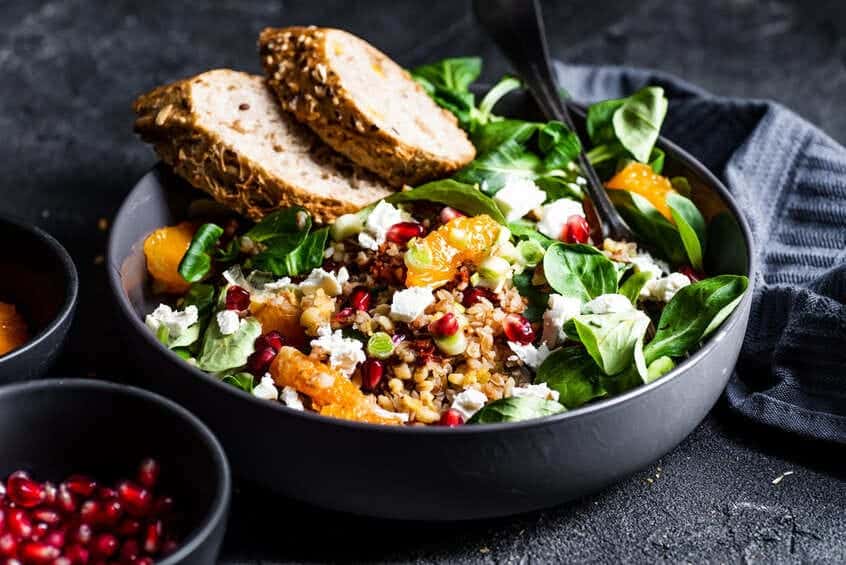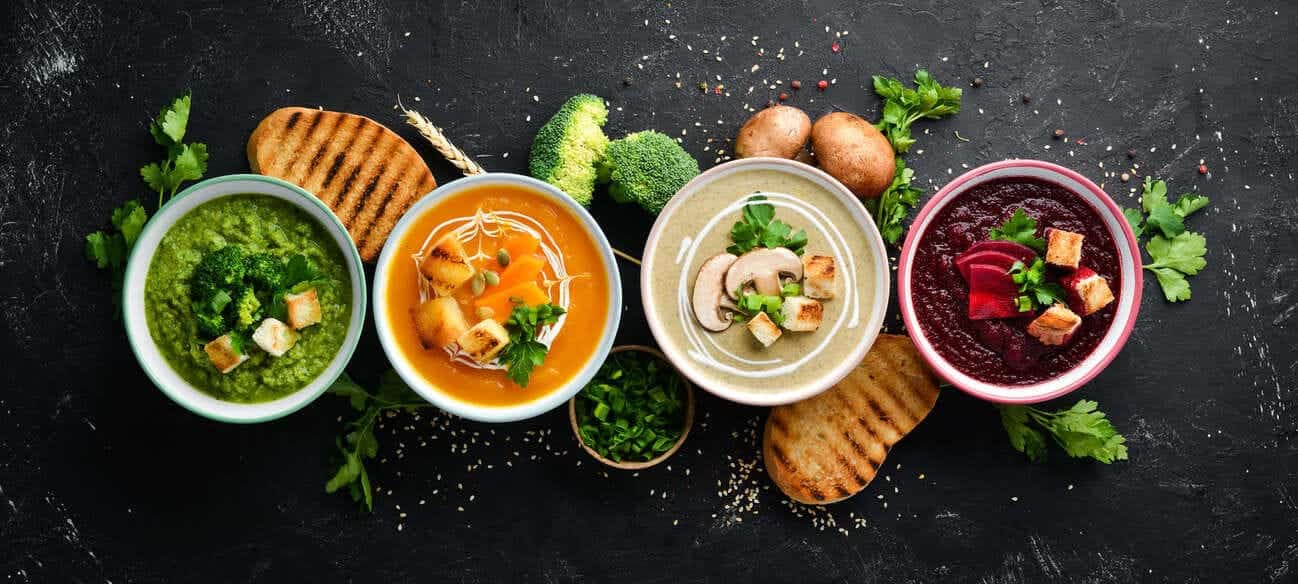Spring diet – tasty and colorful meals
Spring diet is a real ‘nutritional bomb’ containing a bounty of fresh vegetables that are rich in vitamins and antioxidants. Spring meals are based on fresh greens, sprouts, lettuce, radishes, dill, chives, and chard. Other staples include aromatic and easily digestible herbs: basil, thyme, rosemary, and bay leaf. These ingredient combinations cleanse the body of toxins accumulated during the winter, improve liver and gallbladder function, speed up metabolism, and correct vitamin and mineral deficiencies (calcium, potassium, and magnesium). A spring diet with added legumes is a great source of protein, but also provides the body with complex carbohydrates, fiber, B vitamins, and minerals.
What else should be included in the spring diet? Vegetable and fruit juices, which are a great alternative to light meals when you feel less hungry. A great addition to smoothies is parsley – a real treasure trove of vitamin C. As the National Center for Nutrition Education points out:
“Parsley has over three times more vitamin C than lemon! It is also a rich source of beta-carotene (provitamin A), folates, potassium, and iron. We should eat a lot of parsley during the spring period to replenish our levels of vitamin C, which is known to enhance immunity and support the body in fighting infections.”*
Another benefit of the spring diet is reduced consumption of red meat and, consequently, a lower risk of cancer. The International Agency for Research on Cancer (IARC) has presented findings on the links between meat consumption and cancer. “Research has shown that frequent consumption of pork, beef, and other red meats can be an underlying cause of cancer. Red meat has been included in the group of agents classified as probably carcinogenic to humans. Processed meats (sausages, frankfurters, cold cuts, etc.) were found to be an even more potent carcinogen and were classified as agents for which there is compelling evidence that they are carcinogenic to humans.”**

Kickstart your brain into action with the MIND diet
Do you want to rev up your brain function and develop a laser-sharp focus? Choose MIND – the ‘it’ diet of 2022! Most importantly, this is not a dietary fad.
MIND combines the elements of two other principles of nutrition which are widely recognized among the world’s healthiest diets – the Mediterranean diet and the DASH diet. Research has shown that this model of nutrition helps lower the risk of Alzheimer’s disease and dementia by maintaining healthy blood flow and reducing harmful inflammation.
What is the foundation of the MIND diet? When following the MIND diet, you need to eat leafy green vegetables, whole grain products, fish, poultry, and olive oil a minimum of six times a week. Green leafy vegetables are a source of folic acid, vitamin E, carotenoids, and flavonoids. Fish contain omega-3 fatty acids that contribute to suppressing harmful inflammation in the body – including inflammation affecting the brain. In addition, omega-3 fatty acids exhibit antioxidant properties which help protect the body’s cells from damage. When brain cells get damaged, the resulting condition can lead to changes which are precursors to Alzheimer’s disease and dementia.

Research has found that “people who strictly followed the diet had a 53% lower risk of Alzheimer’s disease. Among those who followed the recommendations less strictly, the risk was reduced by 35%. The MIND diet was also found to be associated with a slower rate of cognitive decline.”***
Anti-inflammatory diet – keep your youthful looks for longer
Are you struggling to cope with chronic stress and autoimmune diseases, and want to have more energy and stave off the aging process? With an anti-inflammatory diet, these goals are much easier to achieve than you might think.
An unhealthy lifestyle, insufficient sleep, chronic stress and mental tension, untreated illnesses – all these factors contribute to inflammation in the body. However, a healthy diet is able to counter their harmful effects. According to Dr. Hanna Stolińska, a clinical dietitian, “inflammation causes a wide range of diseases and leads to accelerated aging of the body. It underlies a number of health conditions including atherosclerosis, cardiovascular diseases, allergies, autoimmune diseases, and insulin resistance. This is rarely mentioned, but the main goal of an anti-inflammatory diet is slowing down the aging process and the development of diseases.”****

An anti-inflammatory diet is rich in fruit and vegetables, especially dark green leafy vegetables (kale and spinach), legumes (beans, chickpeas, soybeans, lentils and their products), olive oil, oily sea fish, whole grain products (rich in selenium and zinc), and vegetable oils. As clinical nutritionist Maria Brzegowy notes: “an anti-inflammatory diet should be considered in particular in patients with rheumatoid arthritis, Hashimoto’s disease, endometriosis, psoriasis or morbid obesity.”*****
Would you like to try the spring, anti-inflammatory or MIND diet? With the MultiLife Program, you have access to the Diet Creator, where you can find menus prepared by the best nutritionists!
*https://ncez.pzh.gov.pl/abc-zywienia/wiosenne-porzadki-na-talerzu/
** https://ncez.pzh.gov.pl/abc-zywienia/wiosenne-porzadki-na-talerzu/
*** https://zdrowie.interia.pl/diety/news-dieta-mind-dieta-wspierajaca-prace-mozgu,nId,5746572#utm_source=paste&utm_medium=paste&utm_campaign=firefox
**** https://zwierciadlo.pl/zdrowie/524006,1,dieta-przeciwzapalna.read
*****https://www.doz.pl/czytelnia/a15417-Dieta_przeciwzapalna__zasady_dla_kogo_lista_produktow_przeciwzapalnych_przepisy_i_jadlospis
